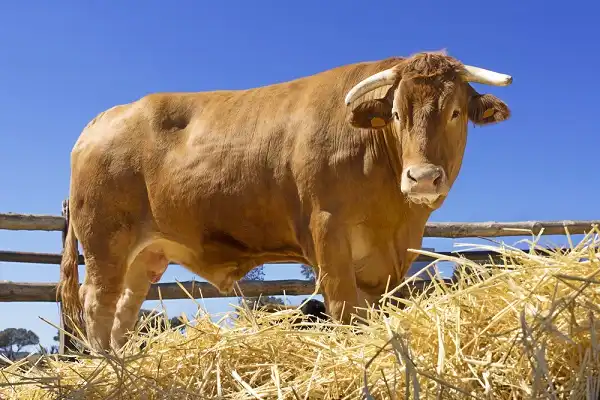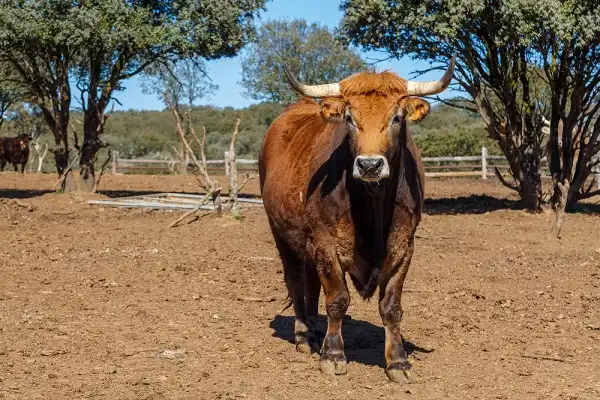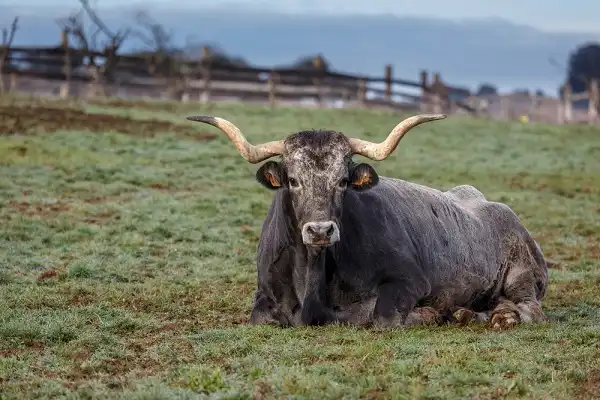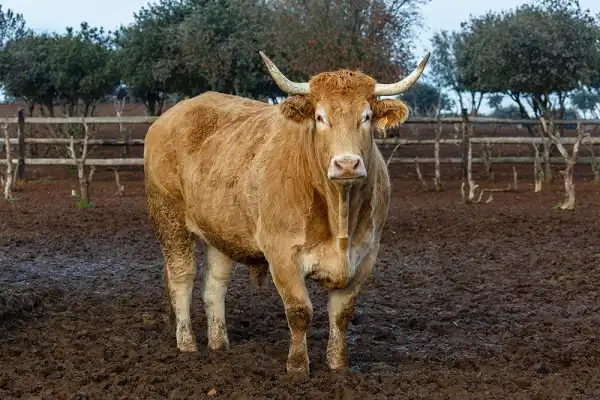If you’re looking for a powerful, versatile animal that can help with farming and transportation, the ox is the perfect candidate. With its strong build and calm demeanor, the ox is an excellent farmhand and can be harnessed to pull heavy loads. Keep reading to learn more about this incredible animal!

Ox Description
The ox is a large, strong bovine animal known for its work ethic and patience. It typically has a reddish-brown coat but can also be black, gray, or white. Oxen have horns and long tails that are often feathered at the end. Exceptional specimens may stand over 6 feet tall!
Ox Habitat
Oxen can live in a variety of environments. They are commonly seen in pastures and meadows, but they may also inhabit wooded areas or deserts. Oxen tend to herd together and graze on grasses, leaves, and other vegetation.
Ox Diet
Oxen are strict herbivores, meaning that they only consume plant matter. They feed on grasses, leaves, grains, and other vegetation. Oxen may also eat hay or other supplemental food sources provided by farmers.
Ox Size
Oxen typically weigh between 900 and 1,800 pounds and can stand up to 6 feet tall. The size of an ox varies depending on the breed, with some being larger than others.
Ox Lifespan
Oxen usually live between 10 and 20 years. This lifespan is greatly affected by the quality of care they receive, however, so oxen that are well taken care of may live even longer.

Ox Behavior
Oxen are known for their calm, patient nature and ability to work hard. They are able to pull heavy loads and can learn commands quickly when trained properly. Oxen may also form strong bonds with their handlers.
Ox Speed
Despite their large size and strength, oxen are relatively slow-moving animals. They typically trot at speeds of up to 6 mph. However, they can gallop up to 10 mph or more when the need arises.
Ox Hunting
Oxen are rarely hunted for their meat or hides, as they have a relatively low market value. Farmers may also keep oxen for agricultural purposes and consider hunting them to be too risky.
Ox Breeding
Oxen generally breed during the spring and summer months when food is plentiful. The gestation period is usually 8–9 months long, after which a single calf is born. Calves typically remain with their mothers until they reach maturity at 1–2 years of age. Male calves are then used for work or sold to other farmers. Female calves often stay with the herd and can even become leaders in some cases.

Ox Uses
Oxen have been used by humans throughout history to pull heavy loads on farms or in transportation. They are much stronger than horses and donkeys and can haul an incredible amount of material with relative ease. Oxen can even be trained to plow fields, sow seeds, and transport goods from one place to another.
Farm Uses for Oxen
Oxen are incredibly useful animals in farming. They can be harnessed to pull a variety of farm implements like plows, carts, wagons, or even sleds filled with heavy objects. Oxen can also help with tilling soil and hauling materials around the farm.
Transport Uses for Oxen
Oxen can be used to transport goods across long distances as well. Because they are strong and patient animals, oxen can pull loads over rugged terrain or through deep snow without getting tired.
Ox Breeds
The most common breeds of oxen are the Hereford, Shorthorn, and Aberdeen Angus. These animals often have distinctive red coats and white faces. Other breeds include Belgian Blue, Charolais, Devon, and Jersey.

Ox Health
Oxen require regular veterinary care to stay healthy. This includes vaccinations for diseases like foot rot or mastitis as well as parasite control treatments. Oxen should also be regularly monitored for signs of injury or illness.
Ox Care
Oxen need a healthy diet in order to stay strong and fit for work. They should be provided with fresh grass or hay on a daily basis, supplemented with grain feed if necessary.
Conclusion
The ox is an incredibly valuable and versatile animal. They are known for their strength, work ethic, and patience, making them ideal for a wide range of tasks such as farming and transport. With the right care and training, oxen can provide humans with reliable help for many years to come.
Frequently Asked Question

